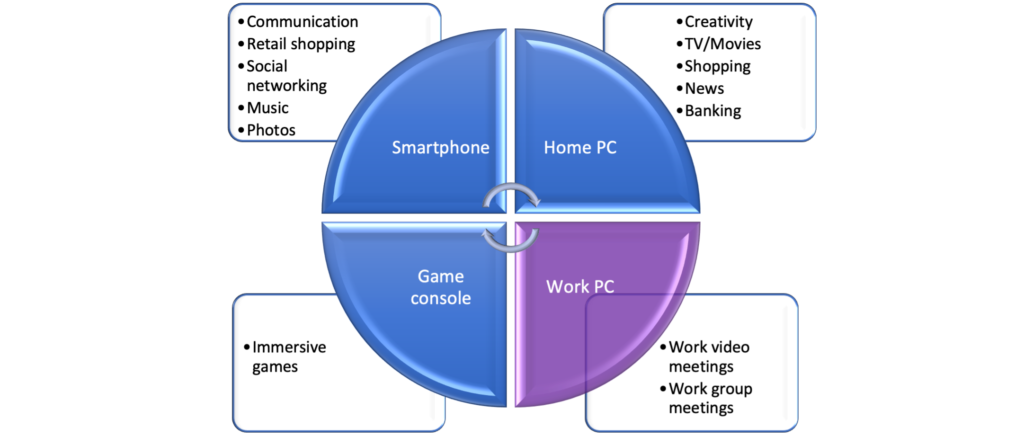After peaking at the start of the COVID pandemic, the hours online adults use their connected devices have broadly declined. Across the US, Germany, and the UK, total device hours have even dropped below their pre-pandemic levels. This MetaFAQs report, based on the results of TUP research from 2016 through 2021, details the hours spent using home PCs, work PCs, smartphones, and tablets and how those hours have shifted.
How older and younger adults use technology differently [TUPdate]
A user’s age is often used as shorthand for estimating the sophistication, eagerness, or purchase likelihood levels of adults with technology devices and services. While age does have some explanatory power, there is much more information needed for understanding. This TUPdate looks at what people do with their devices, which types of devices they use for certain activities, and how this varies by age.
Mobile Phones TUP Lens
Smartphones have rapidly, although not completely, replaced feature phones. Smartphone users have expanded their range of activities with new uses while also increasingly migrating activities from computers and tablets. This TUP Highlights Report profiles smartphones – their market penetration, user demographic profile, regular activities, usage profile, key competitors, and purchase plans.
This TUP Highlights report includes the following sections: penetration of smartphones versus feature phones, smartphone brand share, top activities for smartphones, smartphone carrier share, smartphone usage profile, trends in technology ecosystems, major activities for a market segment, and the profile of smartphone users.
Home PC penetration by socioeconomic groups
How different are advantaged from disadvantaged Americans in whether or not they use a home PC? How much has this changed since before the pandemic? How do historically socioeconomically advantaged groups such as high-income or college graduates compare to disadvantaged groups such as single parents, low-income, less-educated, elderly, or people of color? This TUP analysis reports on the penetration of home PCs within each socioeconomic group.
Juggling work and devices to get things done [TUPdate]
During the pandemic, employees have scrambled to be able to work from home, often using their personal devices in lieu of employer-provided technology products. This TUPdate reports on the specific work-related activities regularly done by employees that do and don’t work from home using their smartphones, home PCs, work PCs, and tablets.
Smartphone usage profile [TUPdate]
Smartphones are used differently among younger than older employees as well as adults that are not employed outside the household. This TUPdate reports on each group – their weekly hours used, their unique set of activities, and their differing use of voice assistants.
PC penetration by socioeconomic groups
How different are advantaged from disadvantaged Americans in whether or not they use a PC, whether personally owned, employer-provided, for self-employment, school, or another one? How much has this changed since before the pandemic? How do historically socioeconomically advantaged groups such as high-income or college graduates compare to disadvantaged groups such as single parents, low-income, less-educated, elderly, or people of color? This TUP analysis reports on the penetration of PCs within each socioeconomic group.
Smartwatch purchase plans
Among online Americans, purchase intentions for Apple Watches outpace those for Android Smartwatches.
For most, PCs are first for connecting
Worldwide, smartphones have grown to be the primary device used the most by nearly half of online adults. Among American adults, PC usage continues to lead, although the gap has narrowed.
Activities for PCs versus smartphones
Dan Ness, Principal Analyst, MetaFacts, September 13, 2021
Which device gets chosen for which activities?


